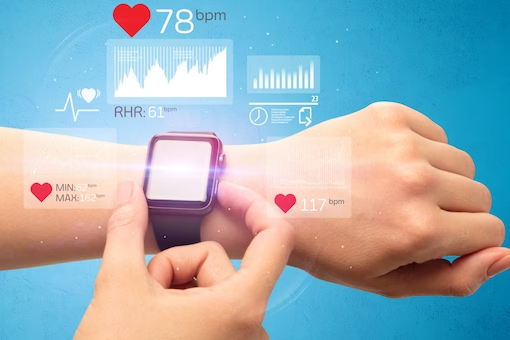How does Smartwatch Measure your Heartrate and Other Vitals?
Smartwatches have become increasingly popular in recent years, and their capabilities have grown significantly. One of the key features of smartwatches is the ability to monitor and track various aspects of our health, such as heart rate and other vitals.
A smartwatch measures heart rate using a technology called photoplethysmography (PPG), which involves shining a light into the skin and measuring the amount of light that is reflected back. This light is absorbed by the blood in the capillaries beneath the skin, and the amount of light absorbed is directly proportional to the volume of blood flowing through the capillaries.
The smartwatch uses sensors to detect this reflected light and calculate the user's heart rate. This information is then displayed on the watch face or can be synced with a smartphone or other device to be viewed later.
Heart rate monitoring is not the only vital that can be tracked by a smartwatch. Many smartwatches also have sensors that can measure other aspects of our health, such as oxygen saturation, blood pressure, and stress levels.
Oxygen saturation is a measure of the amount of oxygen in the blood and is important for people with respiratory problems or heart conditions. A smartwatch can measure oxygen saturation using a sensor called a pulse oximeter, which works by shining a light through the skin and measuring the amount of light that is absorbed by the blood.
Blood pressure is another important aspect of our health that can be monitored by a smartwatch. Blood pressure is a measure of the force of blood against the walls of the arteries and is important for people with heart conditions or those at risk of stroke or heart attack. A smartwatch can measure blood pressure using a sensor that detects changes in the pulse wave, which is the pressure wave that travels through the arteries with each heartbeat.
Stress levels can also be monitored by a smartwatch, which can help users manage their stress and maintain a healthy lifestyle. A smartwatch can measure stress levels by monitoring heart rate variability (HRV), which is the variation in time between consecutive heartbeats. HRV is a good indicator of stress levels, as stress tends to cause a decrease in HRV.
In conclusion, smartwatches have come a long way in recent years, and their ability to monitor and track various aspects of our health has greatly improved. With features such as heart rate monitoring, oxygen saturation monitoring, blood pressure monitoring, and stress level monitoring, smartwatches have become an essential tool for people looking to maintain their health and well-being.





